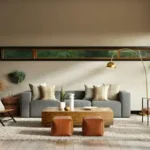Build-to-Rent developments UK trend guide, British rental property building, English housing advice
The Growing Trend of Build-to-Rent Developments in the UK
30 July 2024
In the bustling urban landscape of the UK, a new trend is redefining the way we think about housing: Build-to-Rent (BTR) developments. These purpose-built rental properties are designed to cater to the growing number of people who choose to rent rather than buy. From young professionals to families and retirees, BTR developments offer a flexible, community-centric living experience that is fast gaining popularity. Estate agents in London dive into this trend, exploring its origins, benefits, and the impact it is having on the UK housing market.
The Rise of Build-to-Rent
While the Build-to-Rent model is not new, its prominence in the UK has surged in recent years. Traditionally, rental properties in the UK have been buy-to-let, where individual landlords purchase properties and rent them out. In contrast, BTR developments are constructed with the sole intention of being rented out to individual or institutional private landlords or developers who manage the property.
The UK has seen the rapid rise of BTR for a variety of reasons. Of these, an uncertain economy and property prices, among more stringent mortgage lending criteria, make it increasingly difficult for too many people to own their own homes. There is a tenancy towards flexibility in lifestyle nowadays; because of this, the number of renters dramatically grows. According to the Office for National Statistics, there has been an increase of 100% in the size of the private rented sector over the past twenty years, depicting a shift towards renting.
Benefits of Build-to-Rent
- Quality and Maintenance: One of the primary advantages of BTR developments is the consistent quality and professional management they offer. Unlike traditional rental properties, which can vary widely in condition and upkeep, BTR properties are maintained by dedicated management companies. This ensures that tenants enjoy a high standard of living with prompt maintenance and repairs.
- Community Living: BTR developments often emphasise community living, with shared amenities such as gyms, co-working spaces, communal gardens, and social areas. These features foster a sense of community among residents, making BTR developments more than just places to live—they become vibrant, interconnected neighbourhoods.
- Flexibility: BTR offers a level of flexibility that homeownership cannot match. Tenants can move more easily in response to changes in their personal or professional lives without the long-term commitment and financial burden of buying a property. This is particularly appealing to young professionals and those who prioritise mobility and flexibility.
- Professional Management: With professional management companies at the helm, BTR developments provide a hassle-free renting experience. Tenants benefit from streamlined services, including leasing processes, maintenance, and customer service, which contribute to a more pleasant and efficient living experience.
Key Players in the Market
Large investments are being put and directed into the UK BTR market by both local and international players. Major cities like London, Manchester, and Birmingham have experienced many high-profile developments either completed or underway.
At the forefront of growing the BTR market in the UK are huge, including Legal & General, Grainger plc, and Get Living, which continue to plough billions into development projects right across the country. The companies go beyond the acquisition management of tenants because the projects take the aesthetic quality of staying in a rented house to another level. Such developments usually have associated amenities and services that enhance the tenant experience: all the way from health and wellness centers, rooftop gardens, and concierge services to community events.
Challenges and Concerns
Despite its many benefits, the BTR sector is not without its challenges and concerns. These include the quite legitimate concerns that BTR developments are predominantly focused in urban areas, perhaps fuelling the shortage of affordable housing in these regions even further. While the living standard of BTR property is of a high degree, it sometimes comes with premium rents that are way beyond the reach of poor people.
The long-term issues of affordability and sustainability are equally a concern. As the sector grows, it is incumbent on BTR developments to remain affordable and accessible to as broad a demographic as possible. This requires careful planning and regulation in balancing the interests among investors, developers, and tenants.
The Future of Build-to-Rent
The outlook for Build-to-Rent in the UK is promising. As the housing market has developed, so is the growing participation of BTR developments expected in supplying good-quality, adaptable rented accommodation. This means the industry will expand beyond bigger cities into suburban and perhaps even rural areas, providing diverse housing opportunities to more and more people.
Sustainability has also become a significant focus for BTR developers. With a greater awareness of the environment, this would mean advocacy for eco-friendly developments that minimise impact on their carbon footprint through sustainable building materials, energy-efficient systems, and green spaces promoting biodiversity and health.
A Personal Perspective
To understand the impact of BTR developments, it helps to hear from those who live in them. Sarah, a young professional who recently moved into a BTR development in Manchester, shares her experience:
“Living in a BTR property has been an amazing option for me. The quality of the apartment and the amenities are fantastic. I love having access to a gym and co-working spaces right in my building. The sense of community is strong too—I’ve made friends through the social events they organise. It’s like living in a hotel but with the comfort of home.”
Her sentiments are echoed by many who have embraced this new way of living, highlighting the appeal of BTR developments for a diverse range of tenants.
Conclusion
The growing trend of Build-to-Rent developments in the UK marks a significant shift in the housing market. Offering high-quality, professionally managed rental properties, BTR developments cater to the evolving needs and preferences of modern renters. While challenges remain, the potential for BTR to provide flexible, community-focused housing is immense.
As we look to the future, it is clear that Build-to-Rent is here to stay. By continuing to innovate and prioritise the needs of tenants, BTR developments can play a crucial role in shaping the UK’s housing landscape for the better. Whether you are a young professional seeking flexibility, a family looking for a community, or an investor eyeing new opportunities, the Build-to-Rent sector offers something for everyone.
Comments on this guide to Build-to-Rent developments UK trend article are welcome.
Property Designs
Glasgow Architecture Designs – architectural selection below:
50 Bothwell Street Office Redevelopment
++
Best Rental Property Management Apps to work
Comments / photos for the Build-to-Rent developments UK trend page welcome.





